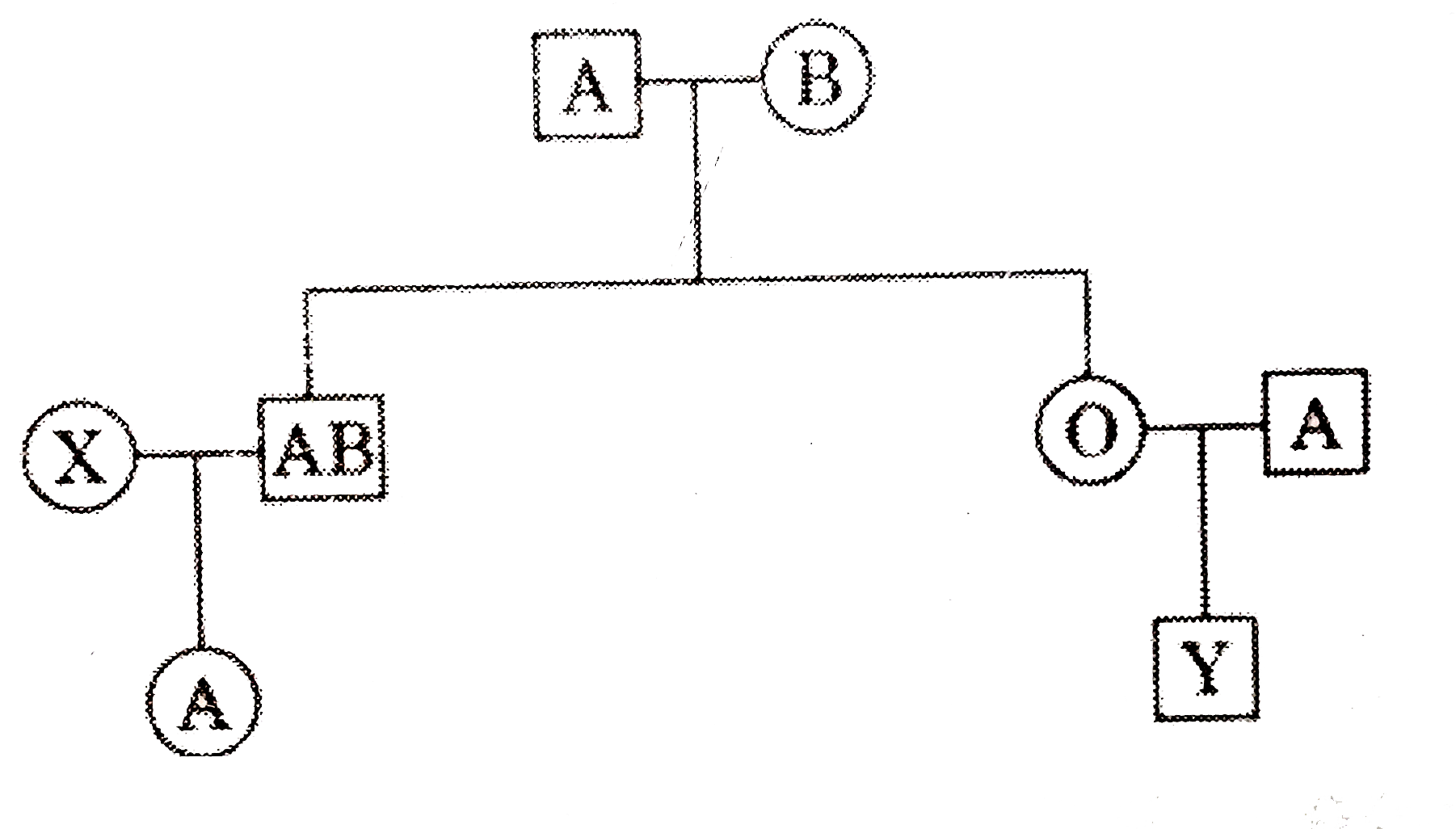What is the number of alleles for blood group in an individual
1
2
3
4
The correct Answer is:B
To determine the number of alleles for blood group in an individual, we can follow these steps:
Step 1: Understand the ABO Blood Group System
The ABO blood group system consists of three alleles: IA, IB, and IO. Each allele corresponds to a specific blood type based on the presence of certain antigens on the surface of red blood cells.
Step 2: Recognize the Alleles
- IA: This allele produces type A blood.
- IB: This allele produces type B blood.
- IO: This allele produces type O blood and does not add any antigen.
Step 3: Identify the Combinations
In an individual, the blood group is determined by the combination of two alleles. The possible combinations and their corresponding blood groups are:
- IA + IA = Type A
- IA + IB = Type AB
- IA + IO = Type A
- IB + IB = Type B
- IB + IO = Type B
- IO + IO = Type O
Step 4: Determine the Number of Alleles in an Individual
Since humans are diploid organisms, they have two alleles for each trait. Therefore, even though there are three possible alleles (IA, IB, IO), an individual can only have two of these alleles at any given time.
Conclusion
Thus, the number of alleles for blood group in an individual is 2.
---
The ABO blood group system consists of three alleles: IA, IB, and IO. Each allele corresponds to a specific blood type based on the presence of certain antigens on the surface of red blood cells.
- IA: This allele produces type A blood.
- IB: This allele produces type B blood.
- IO: This allele produces type O blood and does not add any antigen.
In an individual, the blood group is determined by the combination of two alleles. The possible combinations and their corresponding blood groups are:
- IA + IA = Type A
- IA + IB = Type AB
- IA + IO = Type A
- IB + IB = Type B
- IB + IO = Type B
- IO + IO = Type O
Since humans are diploid organisms, they have two alleles for each trait. Therefore, even though there are three possible alleles (IA, IB, IO), an individual can only have two of these alleles at any given time.
Thus, the number of alleles for blood group in an individual is 2.
Topper's Solved these Questions
- GENETIC BASIS OF INHERITANCEBOOK - DINESH PUBLICATION ENGLISHCHAPTER - GENETIC BASIS OF INHERITANCEEXERCISE - Check your Grasp
30 Videos
- GENETIC BASIS OF INHERITANCEBOOK - DINESH PUBLICATION ENGLISHCHAPTER - GENETIC BASIS OF INHERITANCEEXERCISE - Check your Grasp
30 Videos
- FRUIT AND SEED DISPERSAL BOOK - DINESH PUBLICATION ENGLISHCHAPTER - FRUIT AND SEED DISPERSAL EXERCISE - CHECK YOUR GRASP
10 Videos
- GROWTH, REPAIR, REGENERATION AND AGEINGBOOK - DINESH PUBLICATION ENGLISHCHAPTER - GROWTH, REPAIR, REGENERATION AND AGEINGEXERCISE - Brain Teasers-VI[B]
6 Videos
Similar Questions
(i) Human beings have three alleles for ABO blood grouping |A||B| and i. How many of these alleles can be present in one individual and a gamete ?
(ii) A child has blood group B. If the mother has blood group AB and father blood group A workout the genetypes of the parents and the possible genotypes of the other offsprings.
View Solutionanother common to blood plasma of individual with blood group O− an individual with blood group B+ is/are
View Solution
Knowledge Check
In human beings gene I controls the ABO blood groups. The gene I has three alleles IA,IB,i. Since there are three different alleles, six different genotypes are possible. If two persons with 'AB' blood group marry and have many children, there children can be categorised as 'A' blood group, 'B' blood group and 'AB' blood group in 1:1:2 ratio. Modern technique of protein electrophoresis reveals presence of both 'A', and 'B' type protein in 'AB' blood group individuals.
Presence of both 'A' and 'B' type proteins in 'AB' blood group individuals is an example of:APartial dominanceBIncomplete dominanceCCo-dominanceDComplete dominance
Study the given pedigree chart showing the pattern of blood group inheritance in a family
(a) Given the genotype of the following:
(i)Parents
(ii) The individual 'X' in second generation
(b) State the possible blood groups of the individual 'Y' in third generation
(c) How does the inheritance of this blood group explain codominance?

View SolutionAssertion :- In multiple alleles many alleles are present in a population for a character.
Reason :- All these alleles are present in an individual.
View SolutionHow many gamets will have the recessive allels only if genotype of an individual is AabbCc ?
View SolutionThe number of types of blood group phenotypes that can be produced by the human blood groups alleles A,B, and O is
View SolutionIn the ABO system of blood,group,if both antigens are present but no antibody,the blood group of the individual would be :
View SolutionIn a population, which is in Hardy-Weinberg equilibrium, the recessive allelic frequency is 0.8, in a population of 1300. Find out the number of dominant individuals in that population, if the gene in reference has only two alleles.
View SolutionWhat is correct for blood groups O?
View Solution
